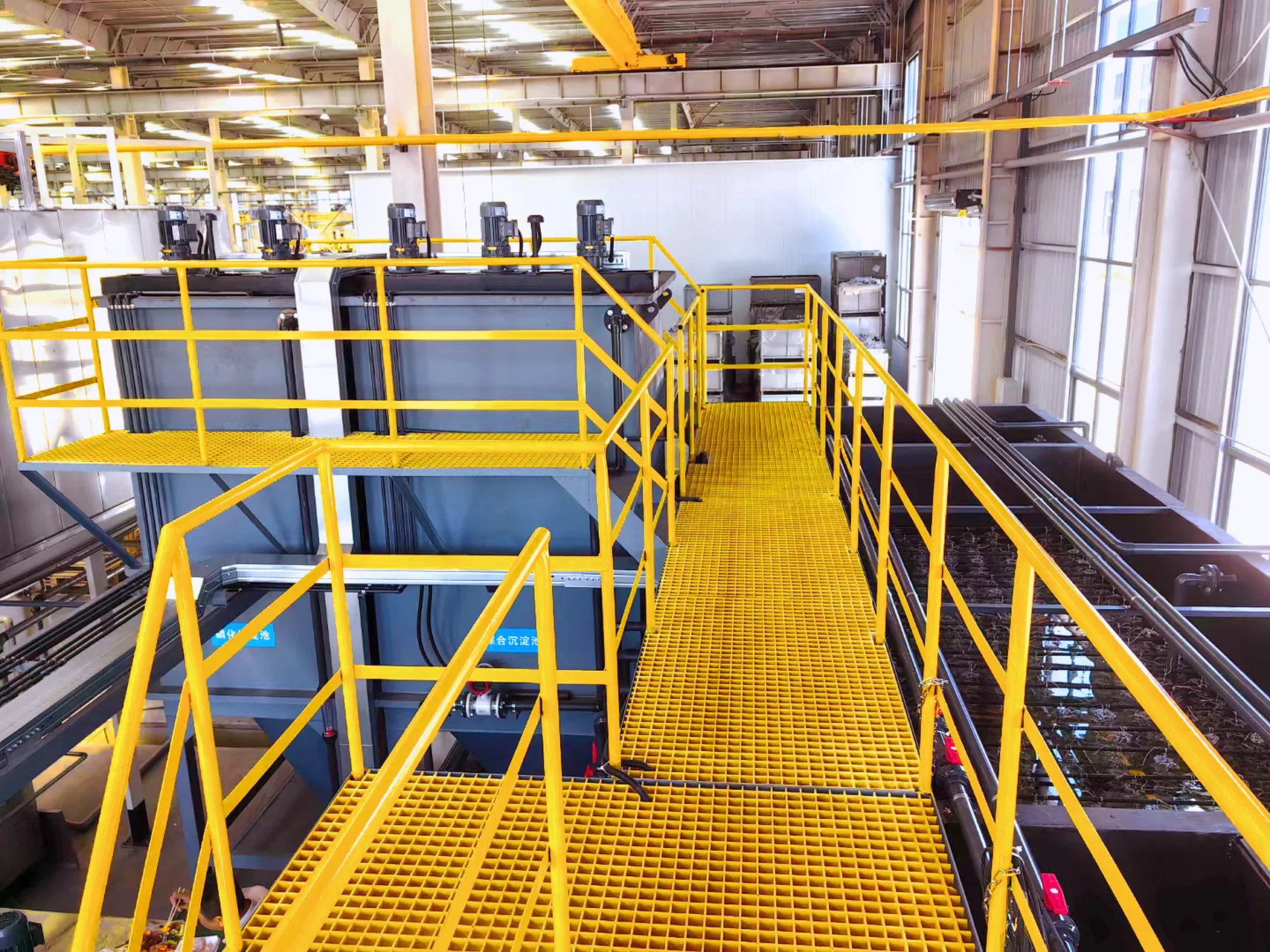Introduction
In high-load industrial environments—such as oil and gas facilities, manufacturing plants, and chemical processing sites—the choice of flooring and walkway systems can be crucial to operational safety and efficiency. Heavy duty GRP grating stands out as one of the most reliable, low-maintenance solutions in these sectors. GRP (Glass Reinforced Plastic), sometimes referred to as FRP (Fiberglass Reinforced Plastic), offers a unique combination of strength, corrosion resistance, and longevity that helps businesses reduce downtime and costs. In this article, we’ll explore the top seven benefits of heavy duty GRP grating, explaining why it’s an ideal option for environments where high loads and harsh conditions are the norm.

heavy duty grp grating
1. Superior Strength-to-Weight Ratio
A primary reason many industries choose heavy duty GRP grating is its impressive strength-to-weight ratio. While steel is strong, it is also notably heavy, requiring additional structural support. GRP, on the other hand, is produced by reinforcing plastic with interwoven glass fibers, creating a robust composite that can withstand high weight loads without adding unnecessary bulk.
- Less structural strain: Due to its lighter weight, GRP is easier to handle and place without compromising on load-bearing capacity.
- Time and labor savings: Workers can move and install GRP panels more efficiently compared to metal grates.
According to a market study published in CompositesWorld, GRP materials can be up to 70% lighter than steel, allowing for easier installation and transportation while maintaining remarkable durability.
2. Corrosion Resistance
In environments where chemicals, saltwater, and other corrosive elements are present, metal grating can quickly deteriorate, leading to costly repairs or replacements. GRP’s non-metallic composition inherently resists rust and corrosion, making it an optimal choice for facilities exposed to moisture, chemicals, and even UV radiation.
- Enhanced longevity: GRP grating remains structurally sound longer, reducing downtime due to repairs.
- Protection in harsh conditions: Facilities near coastlines or areas with high humidity benefit significantly from corrosion-resistant materials.
For instance, the U.S. Department of Energy notes that corrosion costs the U.S. economy billions of dollars each year, emphasizing the importance of materials like GRP that help minimize such losses.
3. Low Maintenance Requirements
A compelling benefit of heavy duty GRP grating is its low requirement for upkeep. Unlike metal grates that may need regular painting or galvanizing to combat rust, GRP typically only requires routine cleaning to remove debris or buildup.
- Minimal inspections and repairs: Because it does not warp, rot, or rust, any maintenance schedule can be far less frequent compared to steel or aluminum.
- Lower long-term expenses: Companies can allocate their budgets to other areas instead of ongoing grating repairs.
Even in the most demanding industrial setups, GRP’s resilience reduces the total time and money spent on maintenance.
4. Anti-Slip Surface
Safety is paramount in any high-load environment, and heavy duty GRP grating addresses this through its anti-slip surface. Most GRP solutions incorporate a molded-in grit or textured finish to improve traction, even in wet or oily conditions.
- Workplace injury prevention: An anti-slip surface minimizes accidents, resulting in fewer worker compensation claims.
- Compliance with standards: Many GRP grating products meet or exceed standards set by bodies like OSHA for walking-working surfaces.
By reducing slip-and-fall incidents, industrial sites can ensure a safer working environment and maintain consistent operations with minimal downtime.
5. Easy Installation
One of the reasons GRP has gained popularity is its lightweight nature, which greatly simplifies both transportation and installation. Here’s what you can expect:
- Reduced manpower: GRP grating panels can often be carried and positioned by fewer workers than required for metal gratings.
- No specialized tools: Standard cutting tools are typically sufficient to fit and customize GRP panels, unlike metal, which often demands heavy-duty cutting equipment.
- Quick turnaround: Projects can move faster, reducing overall construction or maintenance timelines.
Overall, easy installation translates to reduced labor costs and allows for operational processes to resume more swiftly.
6. Cost-Effectiveness
While the initial cost of heavy duty GRP grating can be comparable to or slightly higher than traditional materials, the long-term savings often justify the investment. The return on investment (ROI) is reflected in reduced replacement, repair, and maintenance expenses.
- Longer product life: GRP’s inherent durability extends its usable life, offsetting any higher upfront costs.
- Lower insurance and liability costs: With fewer accidents and safety hazards, companies may see reduced insurance premiums over time.
In a study featured in Industrial Safety & Hygiene News, facilities that switched to GRP reported up to a 20% reduction in annual maintenance expenditures compared to those using metal grates.
7. Durability in Extreme Environments
From freezing temperatures in Arctic regions to scorching heat in desert conditions, heavy duty GRP grating is engineered to perform well in a wide range of extreme climates. Additionally, its ability to withstand chemical spills and exposure to volatile substances makes it suitable for sectors like mining, petrochemicals, and water treatment.
- Temperature fluctuations: GRP experiences minimal expansion or contraction, maintaining consistent performance regardless of the weather.
- Impact resistance: The composite structure can absorb sudden shocks or heavy impacts without fracturing.
Many offshore platforms and marine vessels opt for GRP grating precisely because it can handle relentless exposure to saltwater, wind, and sunlight without losing its structural integrity.
Conclusion
Heavy duty GRP grating delivers a powerful combination of durability, corrosion resistance, low maintenance, and safety features—making it an excellent choice for industries that face high loads and harsh conditions every day. By investing in GRP, companies stand to benefit from a longer product lifespan, lower operational costs, and improved workplace safety.
If you’re considering upgrading or replacing traditional metal grating, take a closer look at heavy duty GRP grating for your next project. For questions, personal experiences, or further insights on this topic, feel free to leave a comment below, share this article with your network, and subscribe to our newsletter for more expert advice and industry updates.




























